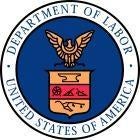Did you know that if you lose an eye or a limb at your current job, your employer is not required to report it to the Occupational Safety and Health Administration? Well, that’s about to change. Starting on Jan. 1, 2015, all employers under federal OSHA jurisdiction will be required to report not only all work-related fatalities within eight hours, but also in-patient hospitalizations, amputations and loss of an eye within 24. Previously, employers were only expected to report after a fatality or when three or more workers were hospitalized in the same incident.
 We believe the updated reporting requirements are not simply paperwork but have a life-saving purpose: they will enable employers and workers to prevent future injuries by identifying and eliminating the most serious workplace hazards.
We believe the updated reporting requirements are not simply paperwork but have a life-saving purpose: they will enable employers and workers to prevent future injuries by identifying and eliminating the most serious workplace hazards.
This week, the Bureau of Labor Statistics released the preliminary version of its 2013 Census for Fatal Occupational Injuries. According to the census, a total of 4,405 fatal work injuries were recorded in the United States in 2013. That number is startling enough, but doesn’t even begin to cover the millions of workers who experience serious injuries every year.
Luis Rey Rivera Pavia was one of the 4,405 workers fatally injured last year. He was 32 years old when he entered a large wire manufacturing machine to retrieve a fallen metal bar at a Wire Mesh Sales factory in Jacksonville, Florida. While inside the machine, he was struck and killed by a moving part. His death should have never occurred. The light curtain that would have automatically turned the machine off when he entered the machine’s danger zone had been disabled.
Even one death or injury on the job is one too many, and we can and must do better for American workers. This updated severe injury and illness reporting rule is one way we can do that. Having improved, broader and more accurate access to information when injuries happen will help us focus our resources and compliance assistance where they are needed the most. Hospitalizations and amputations are very good indicators that a workplace contains major hazards. In the case of Luis Rey Rivera Pavia, OSHA learned only after his death that two workers at the same factory had been severely injured on the same piece of machinery, including an amputation.
By requiring employers to report when injuries like this happen, OSHA will be able to work with them to identify dangers and intervene sooner. We will be able to engage with employers not just through inspections, but through outreach to fix hazards before they become fatal.
We are excited about this rule and how it will help us – OSHA, employers, workers and the public – create safer workplaces, prevent injuries and save lives.



 />i
/>i

